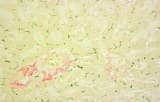
Special stains for pigments and minerals
There are several types of pigments in tissue sections:
- Artefact pigments: which usually result from the tissue attachment step such as, for example, formalin, mercury, chromium or picrate pigments. These pigments are therefore found on the surface of the tissues and not in the cells.
- Exogenous pigments: pigments or minerals having an origin outside the tissue but which are not related to the preparation thereof
- Endogenous pigments: pigments formed in the body. We distinguish between hematogenous pigments such as bile and non-haematogenic pigments such as melanin, lipofuschine, etc.
Minerals are metal or non-metal ions needed for cell growth and other biological functions. This is for example calcium, iron, copper, phosphates and carbonates.
There are several special stains in histology to visualize pigments and mineral deposits in the tissues.



